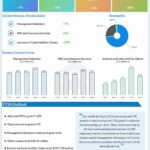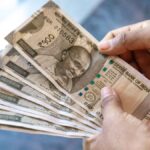
© Reuters. Japanese national flag is hoisted atop the headquarters of Bank of Japan in Tokyo, Japan September 20, 2023. REUTERS/Issei Kato
By Leika Kihara and Tetsushi Kajimoto
TOKYO (Reuters) -The Bank of Japan maintained ultra-low interest rates on Friday and a pledge to keep supporting the economy until inflation sustainably hits its 2% target, suggesting it was in no rush to phase out its massive stimulus programme.
Markets are focusing on comments from Governor Kazuo Ueda’s post-meeting briefing for clues on how soon the bank could start raising interest rates from negative territory.
The Japanese yen fell after the decision to around 148.09 per dollar, near the psychologically important 150 level seen as authorities’ line-in-the-sand for currency intervention.
“The decision reflects a lack of confidence among policymakers that wage growth will gather enough momentum to achieve sustained inflation,” said Daisaku Ueno, chief currency strategist at Mitsubishi UFJ (NYSE:) Morgan Stanley Securities.
As widely expected, the BOJ maintained a 0.1% interest charged on financial institutions’ excess reserves parked with the central bank, and a target for the 10-year government bond yield around 0%.
It also left unchanged an allowance band of 50 basis point set either side of the yield target, as well as a new hard cap of 1.0% adopted in July.
The BOJ’s decision contrasts with those of U.S. and European central banks, which in recent meetings have signalled their resolve to keep borrowing costs high to rein in inflation.
The central bank made no change in its forward guidance, which retained a pledge to “take additional easing measures without hesitation” – language some market players thought might have changed to take on a more neutral tone.
While the BOJ held fire for now, analysts are bracing for a near-term policy shift amid signs of broadening inflationary pressure in the world’s third-largest economy.
Data released earlier on Friday showed Japan’s core inflation hit 3.1% in August, staying above the central bank’s 2% target for a 17th straight month.
Ueda has steadily laid the groundwork for a future exit from ultra-easy policy since taking the helm in April, even as he stressed the need to maintain stimulus.
In a move seen by markets as a step toward an exit, the BOJ in July loosened its grip on long-term interest rates to allow them to rise more freely, a nod to increasing inflation.
Ueda told a recent interview the BOJ could have enough data by year-end to determine whether to end negative rates, heightening market expectations of a near-term policy shift.
“The BOJ is trying to get markets prepared for a future policy shift,” said Takumi Tsunoda, senior economist at Shinkin Central Bank Research Institute. “It probably wants to tweak a monetary policy framework that was designed to beat deflation.”
A Reuters poll for September showed most economists predicting an end to negative interest rates in 2024. Prospects of a rate hike have helped pushed up Japan’s 10-year government bond yield to a fresh decade-high on Thursday.
The BOJ faces various challenges in exiting former governor Haruhiko Kuroda’s radical stimulus, including weak signs in the global economy and the risk of triggering a spike in yields that would boost the cost of funding Japan’s huge public debt.
But maintaining ultra-low rates isn’t without costs. Growing prospects of higher-for-longer U.S. interest rates have weakened the yen against the dollar, inflating the cost of importing fuel and raw material.
The yen’s renewed slide has triggered fresh verbal warnings by government officials, piling pressure on the BOJ to play its part to moderate the pain from rising import costs.
Finance Minister Shunichi Suzuki said on Friday he would not rule out any options to combat excessive volatility in the currency market.








